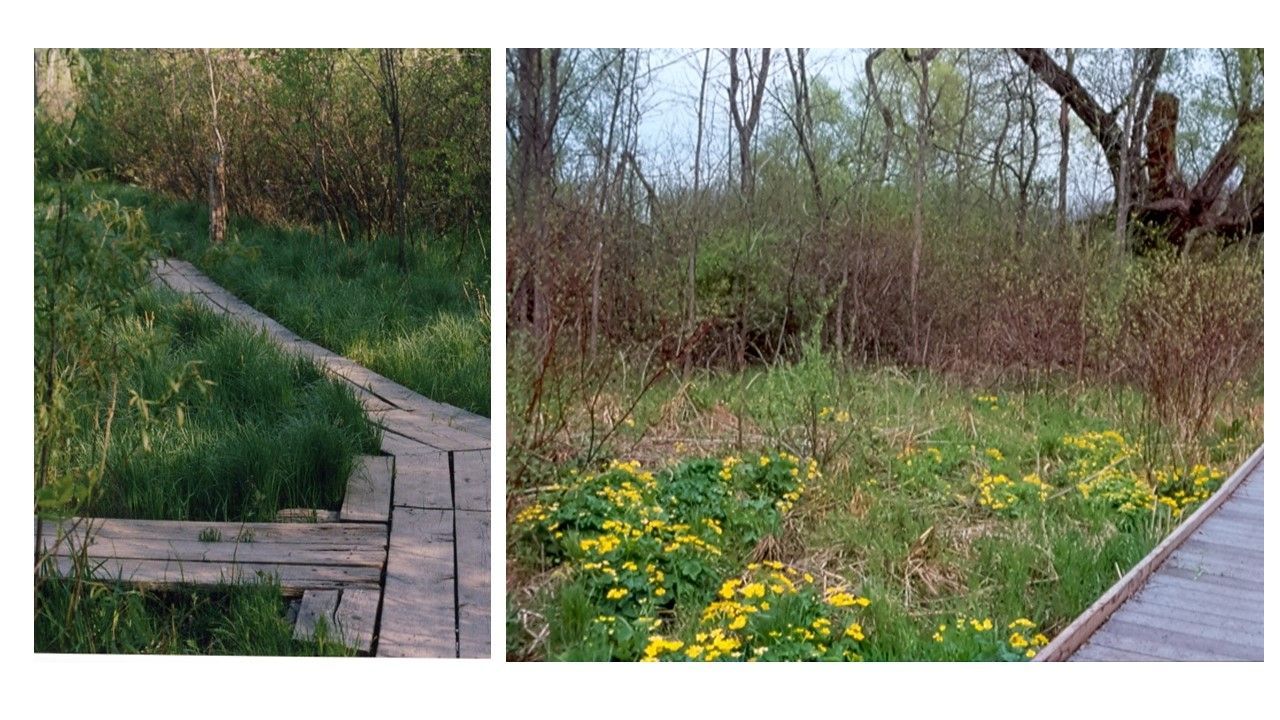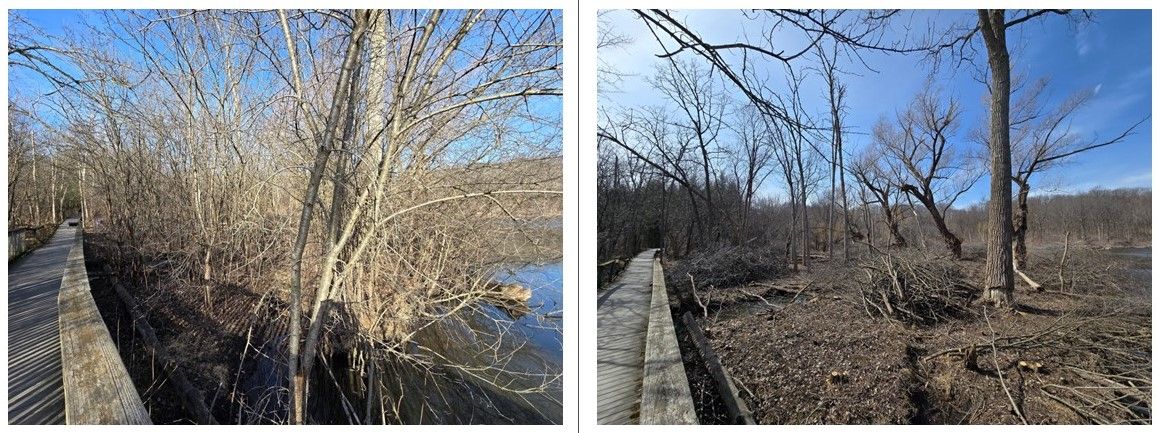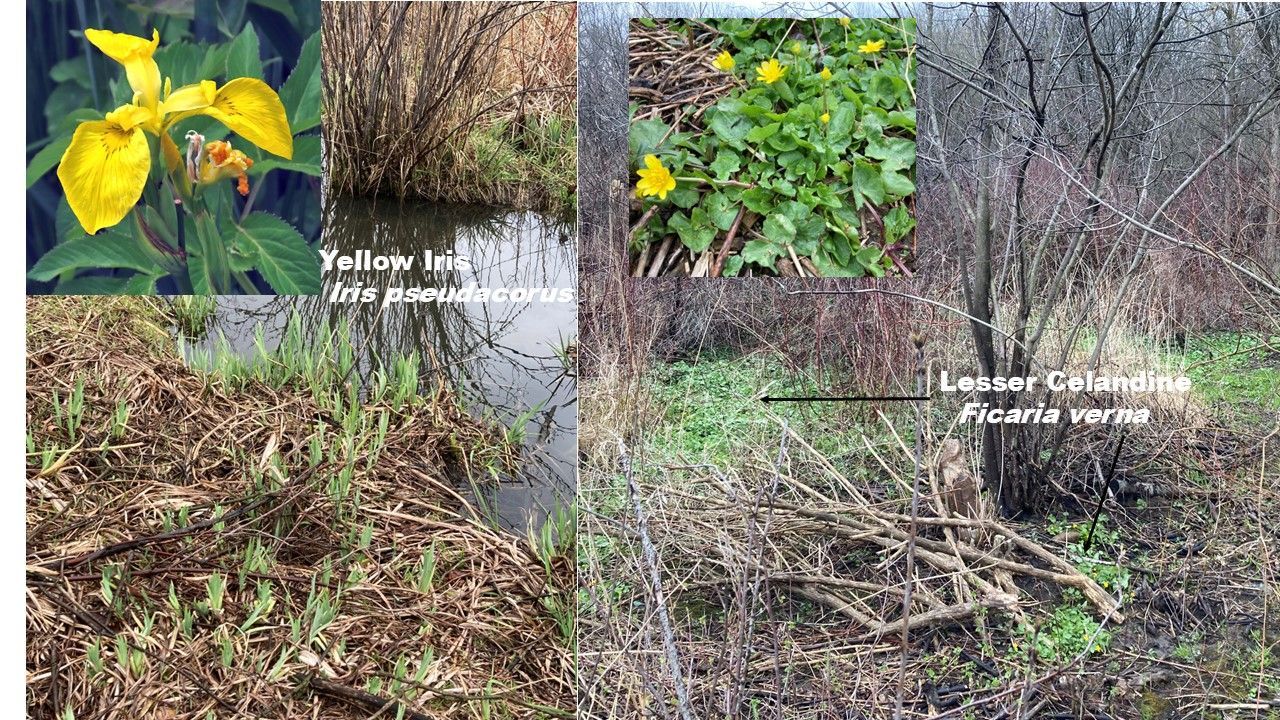Why is restoration needed?
Unfortunately, our wetland and southern lowland forest habitats have been heavily degraded over the last 25 years. Sediment from increased run-off and floods has buried native plants and disturbed the soil. Highly invasive plants like buckthorn, garlic mustard, and yellow iris have thrived in this disturbed environment. Over time, they have displaced the native wetland shrubs and flowers, reducing natural biodiversity and habitat for wildlife.
Major efforts are needed to restore this area to a functioning ecosystem. Healthy wetlands provide important natural services such as flood and erosion control, and act as habitats for unique wet-loving plants and the insects, birds, amphibians, and fish they support. We are confident these natural areas can become healthy and resilient with careful management and time.
What work has already happened?
What comes next?
Management of invasive herbaceous plants will start in the spring of 2025. We will manually remove garlic mustard, but yellow iris, lesser celandine, and reed canary grass will require backpack herbicide application to kill. Herbicides will be applied by trained and certified staff, using best practices such as appropriate concentrations, timing of herbicide, and favorable weather conditions. This phase of the restoration project will conclude in early summer
Native plantings will begin in mid-summer. NRF and SEWISC grant funds will be used to purchase plants, seeds, shrubs, and trees to restore cleared areas with native vegetation. Wet prairie/shrub carr featuring dogwoods, pussy willows, will be restored to the northern portion of the plot, along with a grove of native tamarack trees. The remaining 0.08 acres of southern lowland forest near Warbler Bridge will be planted with willows, silver maples, and birch trees to create a closed canopy. A ground layer of sedges and native manna grass will be established to deter invasive plants from reappearing. Over 800 native herbaceous plants will be planted in the restoration area.
While this restoration work should be finished by the end of 2025, long-term management will continue well into the future. Buckthorn seeds are abundant in the soil, so areas may need to be brush-mowed as they sprout. Prescribed burns could also be used to suppress weed growth.
What about the wildlife?
Some visitors have expressed concern that the absence of a shrub layer in the wetland will impact birds and other wildlife. Until new trees and shrubs are established, there will be a period of reduced cover for nesting birds at the site. However, in the long term, this work will create a richer, more biodiverse habitat to support resident and migratory wildlife.
How can I help with this project?
Because of NRS and SEWISC’s generous support, we can tackle this huge project, but additional help is always welcome as we work to rebuild this critical ecosystem. Please consider donating a plant to Wehr during the
Friends of Wehr Native Plant sale on May 31 and June 1, or donate a shrub or tree to plant in the wetland during the
Friends’ Tree and Shrub Sponsorship Fundraiser. Do you like to work outdoors? The Stew Crew welcomes
new volunteers to join them for their weekly restoration work











